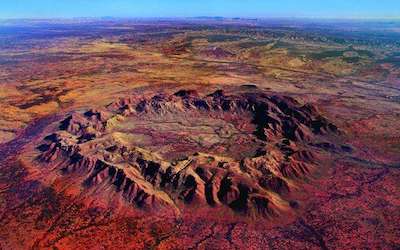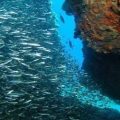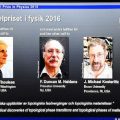PTE考生目前最大的问题之一就是练习题缺乏。除了有限的基本官方书(PLUS,Testbuilder, OG)之外就没有题了。很多英语基础不是很扎实的同学很难找到练习材料。悉尼文波雅思PTE培训学校专门为澳洲,尤其是悉尼、墨尔本的PTE考生准备了适合PTE听力阅读练习的科学60秒。各位PTE同学可以练习PTE听力中的summarise spoken text和PTE口语中的retell lecture,练习记笔记技巧和复述。
听力内容:
60秒科学节目(SSS)是科学美国人网站的一套广播栏目,英文名称:Scientific American – 60 Second Science,节目内容以科学报道为主,节目仅一分钟的时间,主要对当今的科学技术新发展作以简明、通俗的介绍,对于科学的发展如何影响人们的生活环境、健康状况及科学技术,提供了大量简明易懂的阐释。
This is Scientific American — 60-Second Science. I’mJulia Rosen.
Other rocky planets in our solar system show acommon feature: within giant craters caused byimpacts there’s evidence of volcanic activity. Which made scientists wonder—can big impactsactually cause volcanic eruptions? And has thatscenario ever happened here? To find out, scientists went to one of the few massive craters onEarth not erased by plate tectonics: the Sudbury crater in Canada.
“Sudbury is a 1.85-billion–year–old impact structure.”
Teresa Ubide, a geochemist at the University of Queensland in Australia.
“Sudbury was generated when a bolide of 10 to 15 kilometers in diameter hit Earth…and whathappened was it obviously generated a large basin and also it melted the…crust on top of theEarth at that time. And generated a massive melt pool, 2.5 kilometers in depth.”
But Ubide and her colleagues found that the impact did more than that: it also seems to havetriggered eruptions of magma that came from deep in the mantle. The evidence lies in the factthat the chemistry of the lava that erupted at Sudbury changed over time. At first, it matchedthe surface rocks, suggesting it was just from local melting. But as the eruptions continued, thelava appeared to come from deep in the mantle, suggesting the impact stirred things upinside the Earth.
No one knows yet exactly how the impact could have sparked a prolonged episode ofvolcanism. One possible explanation is that after the object smashed into the surface, thecrust would have rebounded upward, temporarily decompressing the mostly solid mantle andcausing it to melt and produce magma. The results are in the Journal of GeophysicalResearch: Planets.
It’s hard to know if the same thing happened on other planets, Ubide says. In many spots inthe solar system it looks like volcanism happened much longer after the impact than what shesaw at Sudbury. But without material to examine directly, we can’t be sure.
Nevertheless, these results do help explain a mysterious chapter in Earth’s own history. Mostmajor impacts on our planet happened about four billion years ago, when the solar system wasstill settling down. But there’s no crust around from that time, suggesting the entire planetgot a makeover soon after.
“We’re suggesting that impacts are able to not only generate the crater, but also, generatemelting deeper, say, in the mantle, and bring to the surface material from depth. So actually, recycle and resurface.”
It seems the pummeling that Earth endured in the beginning may have triggered volcanicactivity that helped wipe away the evidence of those very impacts. In other words, ourplanet took a beating that may have accelerated its own recovery.
Thanks for listening for Scientific American — 60-Second Science Science. I’m Julia Rosen.
墨尔本悉尼霍巴特文波PTE原创首发
更多精彩请持续关注微信wenbo_tv3。





